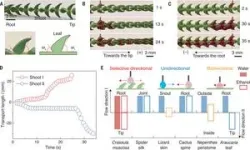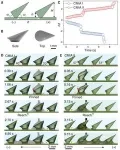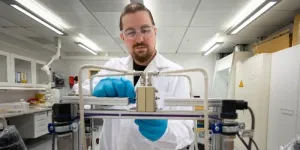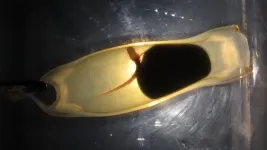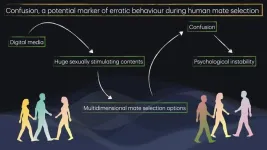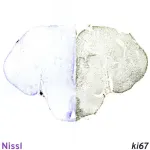(Press-News.org) The more we discover about the natural world, the more we find that nature is the greatest engineer. Past research believed that liquids can only be transported in fixed direction on species with specific liquid communication properties and cannot switch the transport direction. Recently, The Hong Kong Polytechnic University (PolyU) researchers have shown that an African plant controls water movement in a previously unknown way – and this could inspire breakthroughs in a range of technologies in fluid dynamics and nature-inspired materials, including applications that require multistep and repeated reactions, such as microassays, medical diagnosis and solar desalination etc. The study has been recently published in the international academic journal Science.
Liquid transport is an unsung miracle of nature. Tall trees, for example, have to lift huge amounts of water every day from their roots to their highest leaves, which they accomplish in perfect silence. Some lizards and plants channel water through capillaries. In the desert, where making the most of scarce moisture is vital, some beetles can capture fog-borne water and direct it along their backs using a chemical gradient.
Scientists have long sought to hone humankind’s ability to move liquids directionally. Applications as diverse as microfluidics, water harvesting, and heat transfer depend on the efficient directional transport of water, or other fluids, at small or large scales. While the above species provide nature-based inspiration, they are limited to moving liquids in a single direction. A research team led by Prof. WANG Liqiu, Otto Poon Charitable Foundation Professor in Smart and Sustainable Energy, Chair Professor of Thermal-Fluid and Energy Engineering, Department of Mechanical Engineering of PolyU, has discovered that the succulent plant Crassula muscosa, native to Namibia and South Africa, can transport liquid in selected directions.
Together with colleagues from the University of Hong Kong and Shandong University, the PolyU researchers noticed that when two separate shoots of the plant were infused with the same liquids, the liquids were transported in opposite directions. In one case, the liquid travelled exclusively towards the tip, whereas the other shoot directed the flow straight to the plant root. Given the arid but foggy conditions in which C. muscosa lives, the ability to trap water and transport it in selected directions is a lifeline for the plant.
As the shoots were held horizontally, gravity can be ruled out as the cause of the selective direction of transport. Instead, the plant’s special properties stem from the tiny leaves packed onto its shoots. Also known as “fins”, they have a unique profile, with a swept-back body (resembling a shark’s fin) tapering to a narrow ending that points to the tip of the plant. The asymmetry of this shape is the secret to C. muscosa’s selective directional liquid transport. It all has to do with manipulating the meniscus – the curved surface on top of a liquid.
Specifically, the key lies in subtle differences between the fin shapes on different shoots. When the rows of fins bend sharply towards the tip, the liquid on the shoot also flows in that direction. However, on a shoot whose fins – although still pointing at the tip – have a more upward profile, the direction of movement is instead to the root. The flow direction depends on the angles between the shoot body and the two sides of the fin, as these control the forces exerted on droplets by the meniscus – blocking flow in one direction and sending it in the other.
Armed with this understanding of how the plant directs liquid flow, the team created an artificial mimic. Dubbed CMIAs, for ‘C. muscosa-inspired arrays’, these 3D-printed fins act like the tilted leaves of C. muscosa, controlling the orientation of liquid flow. Cleverly, while the fins on a natural plant shoot are immobile, the use of a magnetic material for artificial CMIAs allows them to be reoriented at will. Simply by applying a magnetic field, the liquid flow through a CMIA can be reversed. This opens up the possibility of liquid transport along dynamically changing paths in industrial and laboratory settings. Alternatively, flow could be redirected by changing the spacing between fins.
Numerous areas of technology stand to benefit from CMIAs. Prof. Wang said, “There are foresee applications of real-time directional control of fluid flow in microfluidics, chemical synthesis, and biomedical diagnostics. The biology-mimicking CMIA design could also be used not just for transporting liquids but for mixing them, for example in a T-shaped valve. The method is suited to a range of chemicals and overcomes the heating problem found in some other microfluidic technologies.”
END
PolyU study reveals the mechanism of bio-inspired control of liquid flow, enlightening breakthroughs in fluid dynamics and nature-inspired materials technologies
2024-07-03
ELSE PRESS RELEASES FROM THIS DATE:
Early-onset El Niño means warmer winters in East Asia, and vice versa
2024-07-03
Fukuoka, Japan—The phenomenon known as El Niño can cause abnormal and extreme climate around the world due to it dramatically altering the normal flow of the atmosphere. In Japan, historical data has shown that El Niño years tend to lead to warmer winters. This case was exemplified recently with Japan’s warm 2023-2024 winter season. However, there have also been cases of cold winters in Japan during El Niño years, such as the one recorded in 2014-2015. Yet, it was unclear as to why this was occurring.
Publishing in the Journal of Climate, ...
How to avoid wasting huge amounts of energy
2024-07-03
Norway wastes huge amounts of energy. Surplus heat produced by industry is hardly exploited at all.
Researchers at the Norwegian University of Science and Technology (NTNU) have been looking at the possibilities for doing something about this.
“Surplus heat from industrial processes is a huge resource,” says Kim Kristiansen.
He has just completed his PhD on a technology that can harness some of the surplus heat that currently goes to waste. Almost all the heat generated by industrial processes is currently released directly into the air or the ocean, and we are not talking about small amounts. In Norway alone, industry produces ...
Bowel cancer turns genetic switches on and off to outwit the immune system
2024-07-03
Bowel cancer cells have the ability to regulate their growth using a genetic on-off switch to maximise their chances of survival, a phenomenon that’s been observed for the first time by researchers at UCL and University Medical Center Utrecht.
The number of genetic mutations in a cancer cell was previously thought to be purely down to chance. But a new study, published in Nature Genetics, has provided insights into how cancers navigate an “evolutionary balancing act”.
The researchers found that mutations in DNA repair genes can be repeatedly created and repaired, acting as ‘genetic switches’ that take the brakes off a tumour’s growth ...
Shark hatching success drops from 82% to 11% in climate change scenario
2024-07-03
New experimental research shows that the combined effects of ocean warming and acidification could lead to a catastrophic decrease in embryonic shark survival by the year 2100. This research is also the first to demonstrate that monthly temperature variation plays a prominent role in shark embryo mortality.
Oceanic warming and acidification are caused by greater concentrations of CO2 dissolving into marine environments, resulting in rising water temperatures and falling pH levels. “The embryos of egg-laying ...
Meet the team 3D modelling France’s natural history collections
2024-07-03
France’s natural history collections contain nearly 6% of the world’s total natural specimens across multiple institutions, and the e-COL+ project aims to capture and reconstruct these specimens in 3D for easy access and 3D printing around the world.
“I’m a researcher of vertebrate locomotion and vocalisation, so I produce a lot of CT scans and 3D models – and now I’m in charge of developing the museum’s own 3D digital collection,” ...
Artificial light is a deadly siren song for young fish
2024-07-03
New research finds that artificial light at night (ALAN) attracts larval fish away from naturally lit habitats, while dramatically lowering their chances of survival in an “ecological trap”, with serious consequences for fish conservation and fishing stock management.
“Light pollution is a huge ongoing subject with many aspects that are still not well understood by scientists,” says Mr Jules Schligler, a PhD student at CRIOBE Laboratory (Centre de Recherches Insulaires et Observatoire de l’Environnement) in Moorea, French Polynesia.
ALAN is the product of human-related ...
Social media is a likely cause of ‘confusion’ in modern mate selection
2024-07-03
A recent sociological study finds that most young adults surveyed reported feeling confused about their options when it comes to dating decisions. Preliminary analysis suggests that more than half of young people experience confusion about choosing life-partners, with women appearing to be more likely to report partner selection confusion than men.
Due to the pervasiveness of social media and digital dating in everyday lives, humans are now exposed to many more potential mates than ever before, but the availability of popular dating apps ...
Exploring bird breeding behaviour and microbiomes in the radioactive Chornobyl Exclusion Zone
2024-07-03
New research finds surprising differences in the diets and gut microbiomes of songbirds living in the radiation contaminated areas of the Chornobyl Exclusion Zone, Ukraine. This study is also the first to examine the breeding behaviour and early life of birds growing up in radiologically contaminated habitats.
The Chornobyl Exclusion Zone (Ukrainian), also known as the Chernobyl Exclusion Zone (Russian), is an area of approximately 2,600 km2 of radiologically contaminated land that surrounds the Chornobyl Nuclear Power Plant. The levels of contamination are uneven throughout the zone.
“The ...
Discovering new anti-aging secrets from the world’s longest-living vertebrate
2024-07-03
New experimental research shows that muscle metabolic activity may be an important factor in the incredible longevity of the world’s oldest living vertebrate species – the Greenland shark. These findings may have applications for conservation of this vulnerable species against climate change or even for human cardiovascular health.
Greenland sharks (Somniosus microcephalus) are the longest living vertebrate with an expected lifespan of at least 270 years and possible lifespan beyond 500 years. “We want to understand what adaptations ...
Pregnant fish can also get “baby brain”, but not the way that mammals do
2024-07-03
New research reveals that pregnancy-related brain impairment is present in live-bearing fish, but instead of affecting learning and memory as expected from similar research on mammals, it appears to have a stronger impact on decision-making and sensory reception.
There have been many studies into the detrimental impact of pregnancy on mammalian brains, sometimes called “baby brain” or “momnesia” in humans, revealing how the disruption of neurological processes like neurogenesis, or the creation ...

